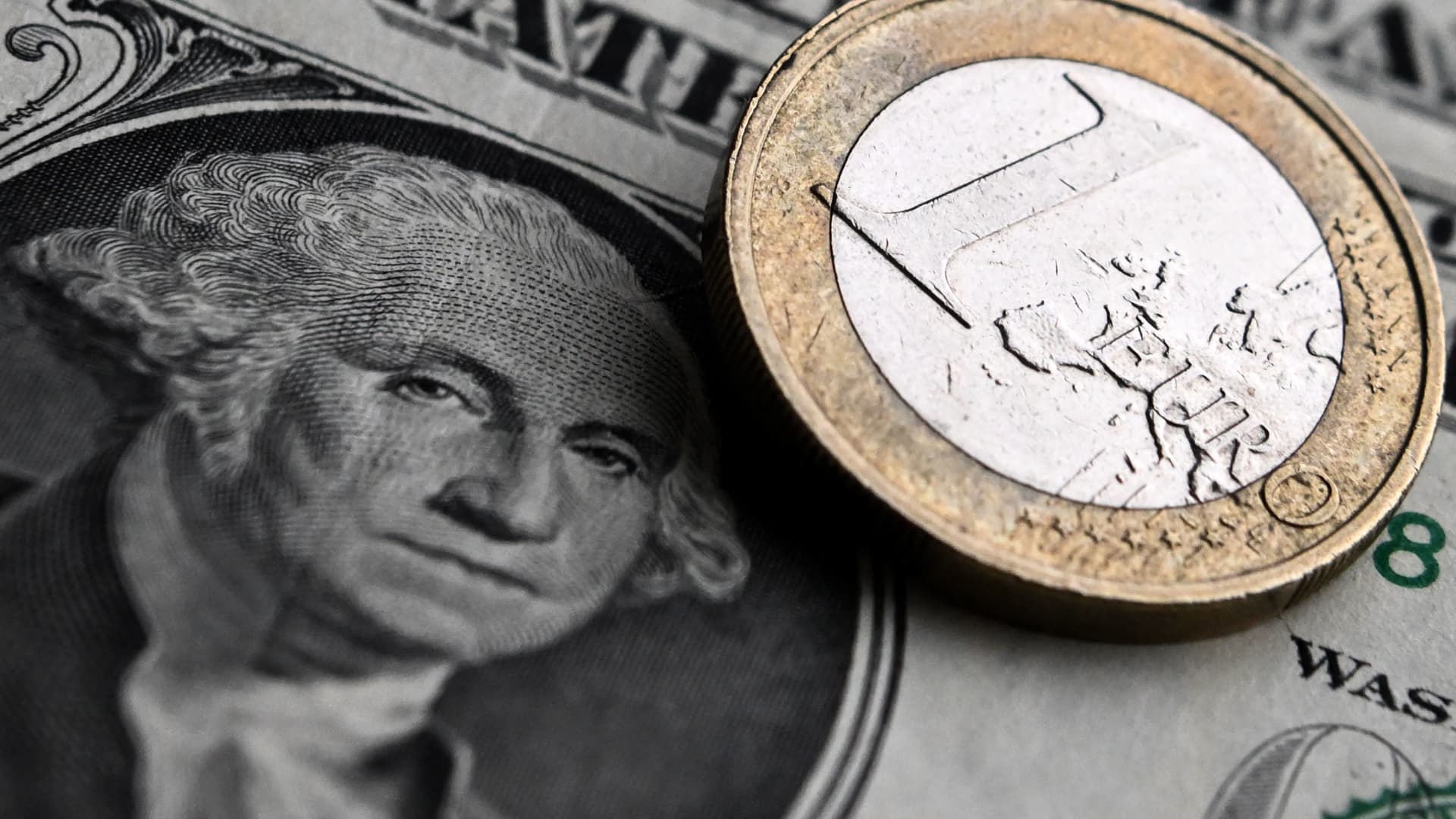The euro has tumbled more than 2% against the U.S. dollar since the European Union struck a framework trade deal with the White House over the weekend, raising questions over whether its massive rally this year against the greenback has run its course. However, market watchers told CNBC that while the euro may have further to weaken in the short term — particularly as the Federal Reserve remains cautious on reducing interest rates — several factors could restore its upward momentum, particularly heading into 2026. Jane Foley, head of foreign exchange strategy at Rabobank, said a lot of good news had been priced into the euro through the spring, but that the EU’s outline trade deal “provided a reality check.” Economists have noted that while the agreement averts an escalation to a worst-case tariff scenario of 30%, it required numerous concessions from the EU and sets a 15% baseline rate that is still much higher than before. EUR= 3M line Stoxx 600 index. “The trade deal may reduce uncertainty but it will be a drag on growth in the EU and the euro zone and this underpins economists’ forecasts that German growth may retain a stagnationary feel this year,” Foley said. The euro zone economy expanded by 0.1% in the second quarter, figures out Wednesday showed, while German gross domestic product shrank 0.1% — even as expectations remain high for the country’s upcoming increase in fiscal spending to boost growth in the years ahead . Also on Wednesday, U.S. GDP growth came in at a stronger-than-expected 3%, rebounding from a 0.5% contraction in the first quarter. The Rabobank team said it believes the euro-U.S. dollar rally had been over-extended and was “ripe for some correction,” and that the euro will remain under pressure on a one- to three-month scale. “We think that the rebound in the dollar against the euro has more room to run,” said Matthew Ryan, head of market strategy at Ebury. “Markets are clearly taking the view that the trade deal will do more harm than good for the EU economy.” “Combine this with the resilience in U.S. data and the oversold nature of the dollar after its worst performance in over five decades in the first half of the year, and it’s no surprise to see the greenback rebounding against its peers,” he added. .DXY YTD line U.S. dollar index. Fed course change But while Rabobank sees euro weakness on a three-month scale, the Dutch bank’s strategists say they see it heading higher in 2026 — potentially to $1.2 in the spring from its current level around $1.142 — assuming the Federal Reserve adopts a more dovish position next year. A rate of $1.2 for the euro has not been hit in four years, and would mark a significant turnaround from late 2024 when the currencies appeared to be moving back toward parity on expectations of the Fed holding rates higher for longer in light of the inflationary risk from tariffs. The Fed has indeed held, but investors have nonetheless sold off the greenback amid wider concerns about the U.S. deficit and volatile policymaking . While the continued resilience of the U.S. economy suggests the central bank will remain cautious on cutting rates, at Wednesday’s meeting two out of 11 policymakers voted no on the decision to hold, both of whom have advocated a start to easing. The result was the biggest dissension among Fed governors since late 1993. Money market pricing last suggested expectations for one quarter-point rate cut this year, followed by two more in the first half of 2026. Many analysts, meanwhile, interpreted the European Central Bank’s messaging at its own July meeting as suggesting it is now done with rate cuts, barring any shocks, reaching its so-called terminal rate at the current 2%. Economic divergence Holger Schmieding, chief economist at Berenberg, sees the dollar resuming its downtrend by early 2026 at the latest because of the relative trend growth differential between the U.S. and the euro zone looking ahead. “Near-term, relief over easing trade tensions and the Fed’s reluctance to cut rates will serve to stabilise the dollar close to current levels for the remainder of the year,” Schmieding said. “But the longer-term negatives are not going away at all.” Those include the Trump administration’s protectionist trade stance, restrictions on immigration and “unsustainable” fiscal policies, according to his analysis. Europe is concurrently seen regaining economic momentum thanks to fiscal expansion and some supply-side reforms in Germany, with the “narrowing transatlantic growth gap” set to prove bearish for the dollar even if the U.S.’ actual growth rate remains above that of Europe. Goldman Sach strategists said in a note last Friday that the White House’s trade agreements so far are likely to weigh on the greenback over time, given the expectation that the U.S. baseline “reciprocal” tariff rate will rise to 15% from 10%. More disruptive outcomes could in fact have “activated dollar safe-haven flows,” they wrote. “Now that markets have a better sense of the local landing zone, manageable but meaningful changes in tariff rates should weigh on the relative prospects for U.S. economic performance, which will reduce foreign investor appetite (and this week’s Fed construction site tour was no help ), and thereby continue to erode the dollar’s strength.”





